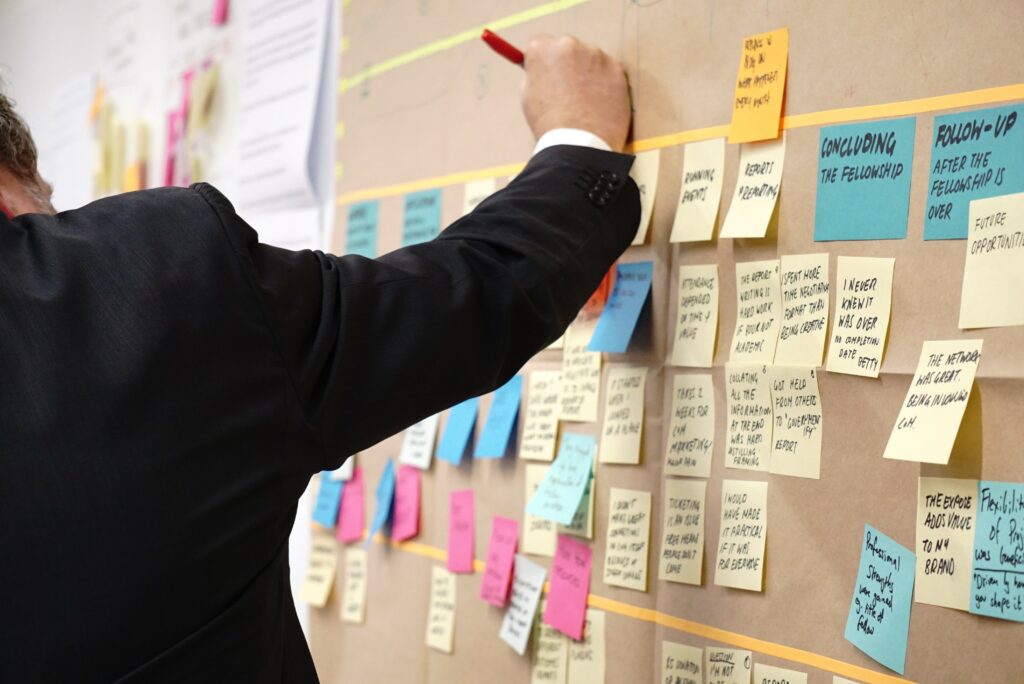At some point in our lives, we will find ourselves in a situation where we disagree with someone. Conflict is a normal part of human interaction.
If left unresolved, conflict can escalate into something more serious, leading to damaged relationships, loss of productivity, and even legal action. This is where conflict mediation can be beneficial.
Conflict mediation is a process that involves bringing together parties with opposing views to find a mutually acceptable solution. It’s a way of resolving disputes peacefully, respectfully, and constructively.
This article will discuss the basics of conflict mediation and how it can help you resolve disputes effectively.

The Role of Mediation in Conflict Resolution
Mediation is a process of facilitated negotiation in which a neutral third party helps parties in a dispute reach a mutually acceptable agreement.
Mediation is voluntary and confidential, and it empowers the parties to control the outcome of the dispute rather than relying on a judge or arbitrator.
Mediation is widely used in many contexts, including family, workplace, community, and international disputes.
Mediation in conflict resolution provides a safe and structured environment for parties to communicate, clarify their needs and interests, generate options, and reach a mutually acceptable agreement.
Mediators do not make decisions or impose solutions but rather facilitate the parties’ own decision-making process. Mediators help parties to:
1. Communicate Effectively
Mediators help parties to express themselves clearly and respectfully, listen actively and empathically, and avoid misunderstandings and misinterpretations.
Mediators may use techniques such as paraphrasing, summarizing, reframing, and validating to enhance communication.
2. Identify Needs and Interests
Mediators help parties explore and clarify their underlying needs, interests, values, and goals, distinguishing them from positions or demands.
Mediators may ask open-ended questions, use reflective listening, and encourage parties to brainstorm alternatives to expand their options.
3. Generate Agreement and Settlement Options
Mediators help parties to brainstorm and evaluate various options for resolving the dispute and to assess their advantages, disadvantages, and feasibility.
Mediators may use problem-solving, interest-based bargaining, and reality testing to assist parties in generating options.
4. Reach an Agreement or a Settlement
Mediators help parties negotiate and finalize a mutually acceptable, feasible, durable, and enforceable agreement that meets their needs and interests.
Mediators may use techniques such as caucusing, bridging, and summarizing to facilitate the agreement.

The Advantages of Conflict Mediation
Mediation has several advantages over other forms of conflict resolution, such as litigation, arbitration, or negotiation without a mediator. Mediation is:
- Voluntary: Mediation is a voluntary process that requires the parties’ consent to participate and to reach an agreement. Mediation respects the parties’ autonomy and self-determination and does not force them to accept a decision or a solution.
- Confidential: Mediation is a confidential process that protects the parties’ privacy, dignity, and reputation. Mediation does not create a public record or expose the parties’ weaknesses or vulnerabilities.
- Cost-effective: Mediation is a cost-effective process that saves time, money, and resources compared to litigation or arbitration. Mediation avoids lengthy court proceedings, discovery, experts, and appeals and reduces the workload of the judicial system.
- Flexible: Mediation is a flexible process that adapts to the parties’ needs, preferences, and cultures. Mediation allows the parties to choose the mediator, the time, the place, the language, and the mediation format.
- Preserves relationships: Mediation is a process that maintains and improves the parties’ relationships, whether personal, professional, or community-based. Mediation promotes communication, understanding, and empathy, reducing animosity, resentment, and hostility.
The Steps of Conflict Mediation
1. Initial Meeting and Assessment
The first step in the mediation process is an initial meeting between the mediator and the parties involved. During this meeting, the mediator explains the mediation process and establishes ground rules. The mediator will also assess the conflict to determine whether mediation is a suitable option and identify potential obstacles to resolution.
2. Opening Statements
Once the mediator has established ground rules and assessed the conflict, the parties will have an opportunity to make opening statements. This is a chance for each party to express their side of the story and explain their perspective on the conflict.
3. Information Gathering
After the opening statements, the mediator will gather more information about the conflict. This may involve asking questions, gathering documents, or conducting interviews. The mediator will use this information to understand the conflict better and help the parties identify areas of agreement and disagreement.
4. Negotiation and Problem-Solving
Once the mediator has gathered sufficient information, the negotiation and problem-solving phase can begin. This is where the parties work together to find a mutually agreeable solution.
The mediator may offer suggestions or guide the parties toward a solution, but ultimately, the parties must agree to the terms of the resolution.
5. Settlement or Agreement
The final step in the mediation process is settlement or agreement. Once a resolution has been reached, the mediator will document the terms of the agreement and ensure that all parties understand and agree to the terms.
The mediator may also schedule a follow-up meeting to ensure the resolution is implemented effectively.

How Negotiations Work in Conflict Mediation
Negotiation is a crucial part of the mediation process. It involves parties discussing and exchanging proposals and offers to reach a mutually satisfactory agreement.
Negotiation can be challenging, as parties may have different interests, priorities, and preferences.
Mediators play a vital role in facilitating negotiation and helping parties to reach a resolution. The following are some of the ways in which mediators can assist parties in negotiation:
- Clarifying Interests: Mediators should help parties to identify and explain their underlying interests and needs. By doing so, parties can better understand their priorities and goals and be more open to finding creative solutions that meet their interests.
- Generating Options: Mediators should encourage parties to create multiple options for resolution. This can help parties explore various possibilities and find innovative solutions that meet both parties’ needs.
- Evaluating Options: Mediators should help parties evaluate each option’s feasibility, effectiveness, and consequences. By doing so, parties can make informed decisions and select a mutually acceptable option.
- Managing Power Imbalances: Negotiation can be challenging when parties have unequal power or resources. Mediators should be aware of power imbalances and be able to manage them effectively. Mediators should ensure that all parties have an equal opportunity to participate and express their views and that the negotiation process is fair and transparent.
- Building Trust: Negotiation can be more successful when parties trust each other and have a positive relationship. Mediators should help parties to build trust by creating a safe and supportive environment, encouraging active listening, and promoting empathy and understanding.
- Overcoming Deadlocks: Negotiation can sometimes reach a deadlock when parties cannot agree on a particular issue. Mediators should help parties to overcome deadlocks by reframing the issue, suggesting new options, or taking a break to allow parties to reflect and reconsider their positions.
Creativity in Conflict Mediation
Mediation is not just about finding a compromise between two parties. It is about finding a solution that satisfies the interests of both parties and is creative enough to address their underlying needs.
Creativity is an essential element in mediation, and mediators must be able to help parties think outside the box and find innovative solutions. Here are some ways in which mediators can promote creativity in mediation:
- Brainstorming: Brainstorming is a technique that encourages parties to generate ideas and solutions without evaluating them. Mediators can use brainstorming to create various possible solutions and then evaluate them with the parties.
- Reframing Issues: Reframing is a technique that involves looking at the problem from a different perspective. Mediators can help parties to reframe the issue by asking open-ended questions and encouraging them to think about the situation in a new way.
- Option Building: Option building is a technique that involves developing a range of possible solutions and then selecting the best one. Mediators can use option building to help parties develop a list of possible solutions and evaluate them based on their interests and needs.
- Reality Testing: Reality testing involves testing the feasibility of a proposed solution. Mediators can use reality testing to help parties to evaluate the practicality of their proposed solutions and assess the potential consequences.
- Interest-Based Negotiation: Interest-based negotiation focuses on the parties’ underlying interests rather than their positions. Mediators can use interest-based negotiation to help parties identify their underlying interests and find solutions that satisfy them.
Creativity is essential in mediation, and mediators must be able to help parties find innovative solutions to their disputes.

Cultural Awareness in Conflict Mediation
Cultural awareness is essential in mediation because it helps mediators understand the parties’ cultural backgrounds and how their culture may impact their views and behaviors.
It also helps mediators develop strategies for effectively communicating with the parties and resolving the dispute.
Here are some tips for mediators to increase their cultural awareness:
- Research the parties’ culture: Mediators should research the parties’ culture and understand their cultural norms, values, and beliefs. This can help mediators understand how the parties view the dispute and what solutions may be acceptable.
- Avoid making assumptions: Mediators should avoid making assumptions based on the parties’ cultural backgrounds. Instead, they should ask open-ended questions and listen actively to the parties’ responses.
- Use culturally appropriate communication: Mediators should use culturally appropriate communication strategies to ensure they effectively communicate with the parties. This may include using appropriate language, nonverbal cues, and tone of voice.
- Be aware of cultural differences: Mediators should be mindful of cultural differences that may impact the mediation process. For example, some cultures may value direct communication, while others may value indirect communication.
- Be respectful: Mediators should respect the parties’ cultural backgrounds and not engage in any behavior that may be perceived as disrespectful or discriminatory.
Mediators should research the parties’ culture, avoid making assumptions, use culturally appropriate communication, be aware of cultural differences, and respect the parties’ cultural backgrounds.

Creating a Safe and Supportive Environment at Conflict Mediation
Creating a safe and supportive environment is crucial in mediation because it helps the parties feel comfortable expressing their needs and concerns.
A safe and supportive environment can help the parties work collaboratively to resolve everyone’s needs.
Here are some tips for creating a safe and supportive environment in mediation:
- Establish ground rules: At the beginning of the mediation, mediators should establish ground rules that emphasize respect and listen to each other. These rules help the parties feel comfortable expressing their needs and concerns.
- Set the tone: Mediators should set the tone for the mediation by remaining calm, neutral, and respectful. Mediators should also be mindful of their body language, tone of voice, and use of language to create a supportive environment.
- Address power imbalances: Mediators should be aware of any power imbalances between the parties and take steps to address them. This may include giving each party an equal opportunity to speak, encouraging active listening, and acknowledging any power dynamics that may be present.
- Encourage collaboration: Mediators should encourage the parties to work collaboratively to resolve everyone’s needs. This may include brainstorming solutions together and finding common ground.
- Address emotions: Mediators should address any feelings that may arise during the mediation process. This may include acknowledging the parties’ feelings, validating their emotions, and helping them manage their emotions effectively.
By creating a supportive environment, mediators can help the parties work collaboratively to resolve everyone’s needs.
Is Conflict Mediation Right for You?
Determining whether conflict mediation is the right choice depends on several factors. Here are a few things to consider:
- Willingness to participate: Conflict mediation is voluntary, so all parties must be willing to participate. If one or more parties are not interested in mediation, better choices may exist.
- Level of conflict: Conflict mediation is most effective when parties are experiencing mild to moderate conflict. If the conflict is intense or involves physical violence, other interventions may be necessary.
- Potential for resolution: If the parties are open to exploring solutions and are willing to compromise, then mediation may be a good choice. However, if one or more parties are unwilling to compromise or have unrealistic expectations, mediation may be ineffective.
- Time and resources: Conflict mediation can be time-consuming, and parties must be willing to invest the time and resources needed to participate fully.
- Availability of a qualified mediator: To ensure a successful mediation, it is crucial to work with a qualified mediator with the necessary training and experience to facilitate the process.
Conflict mediation can be a good choice if all parties are willing to participate and there is potential for resolution. However, if the conflict is very intense or involves physical violence, or if one or more parties are unwilling to participate or compromise, other interventions may be necessary.

Tips for Successful Conflict Mediation
1. Choose the Right Mediator
Choosing a mediator with the appropriate training, experience, and temperament for the specific conflict is essential. Look for an impartial, empathetic mediator skilled in communication and negotiation.
2. Come Prepared
To get the most out of mediation, it’s essential to come prepared. This may involve gathering relevant documents, preparing a list of key points, or bringing in expert witnesses.
3. Listen and Communicate Effectively
Effective communication is critical in conflict mediation. It’s essential to listen actively and communicate clearly and respectfully. Avoid interrupting or attacking the other party and focus on finding common ground.
4. Focus on Interests, Not Positions
Conflict often arises from competing positions or demands. Instead of focusing on positions, identify each party’s underlying interests. This can uncover areas of agreement and facilitate resolution.
What to Read Next
- Resolving Legal Disputes Peacefully: Understanding Court Mediation
- Binding Mediation: The Simple Yet Powerful Way to Resolve Conflict
- Mediation vs. Arbitration: Finding the Best Solution for Your Case
- Finding Common Ground: A Look at the Divorce Mediation Process
- Unlocking the Benefits of Divorce Arbitration: What Your Lawyer Isn’t Telling You
- Transformative Mediation: Creating Positive Change Through Dialogue

